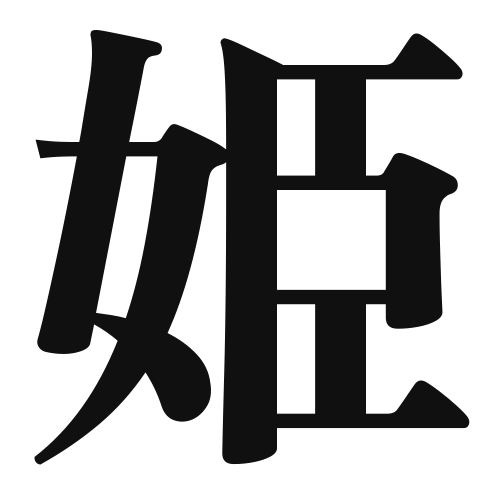1. Overview of Meaning
The kanji “姫” (hime) means “princess” or “young lady.” It is often associated with nobility, grace, and femininity in Japanese culture.
2. Formation and Radicals
The kanji “姫” is a compound character that combines the radical “女” (woman) with the phonetic component “霓” (which relates to beauty and elegance). This combination emphasizes the feminine qualities of the character.
The radical “女” indicates that the character is related to women or femininity.
3. Examples of Usage
Common words and phrases that include “姫” are:
- 姫君 (himegimi) – “princess”
- 姫路 (Himeji) – a city known for its beautiful castle
Example sentence in daily conversation:
彼女は本当に姫のように美しいです。
(Kanojo wa hontō ni hime no yō ni utsukushii desu.)
Translation: “She is truly beautiful like a princess.”
4. Synonyms and Antonyms
Similar kanji with related meanings include:
- 女 (onna) – “woman” (more general term)
- 少女 (shōjo) – “girl” (younger female)
Antonyms include:
- 男 (otoko) – “man”
- 王 (ō) – “king” (representing male royalty)
5. Cultural and Historical Background
The kanji “姫” is deeply rooted in Japanese culture, often used in literature, folklore, and historical contexts to denote noble women. It is frequently seen in stories about princesses and their adventures.
Proverbs and idioms that include “姫” often reflect ideals of beauty and grace, such as:
- 姫のように扱われる (hime no yō ni atsukawareru) – “to be treated like a princess.”
This reflects the cultural significance of the term in expressing respect and admiration for women.
